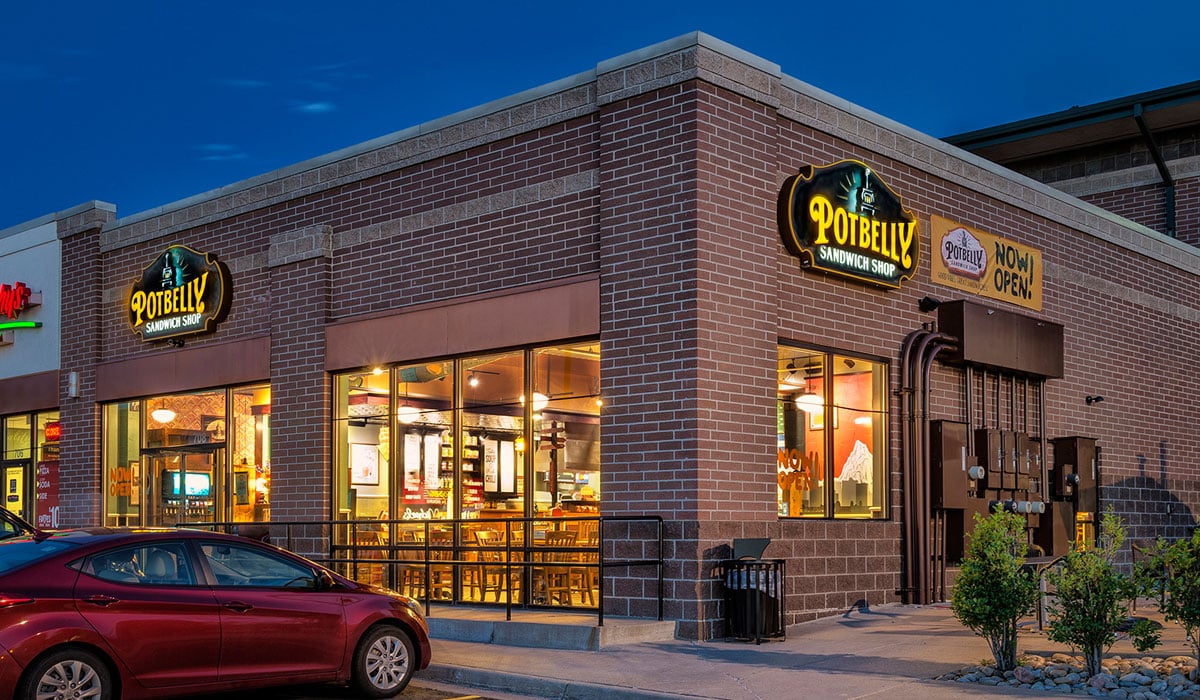As Potbelly CFO Steven Cirulis put it, Q2 was the toughest period in Potbelly’s 43-year history.
Due to the COVID pandemic and dining room closures, same-store sales went from an increase of 2.5 percent through January and 4.1 percent through February to a low point of negative 68 percent in late March.
Most notably, the sandwich shop was considering the closure of up to 100 underperforming stores. There’s also been significant shifts in management—Cirulis was brought on in April while Bob Wright became the new CEO in July.
Despite the difficult circumstances, the Potbelly team rolled up its sleeves and went to work, Cirulis said. Through steadily improving comp sales, constructive discussions with landlords, and cuts in expenses, the number of stores that may close permanently has been reduced to fewer than 50 units.
More than $25 million in costs were cut from G&A, workforce, capital expenditures, and rent.
Potbelly’s weekly cash burn rate has decreased by roughly 75 percent since the early weeks of the pandemic, and the restaurant has been cash-positive at store-level since May 31.
Cirulis said the team not only stabilized the business, but it strengthened the restaurant for the future.
“It’s largely due to the fact that we’ve got a business that is responding, and we’ve also had some productive conversations with landlords where we had some shops that were unprofitable,” Cirulis said during the company’s Q2 earnings call. “But based on a new lease structure, those shops are profitable to operate.”
Comp sales improved to a decline in the mid-20 percent range throughout June, which the company attributed to innovative offerings such as Potbelly Pantry, family meal deals, and curbside pickup.
The brand relaunched a simplified Perks loyalty program, which resulted in a 53 percent rise in membership and more than 2 million members for the first time in history. In addition, digital tripled to 46 percent of sales. Potbelly’s sales mix shifted from 70 percent on-premises pre-COVID to 70 percent off-premises during the pandemic.
“While the pace of the recovery has slowed somewhat with recent virus outbreaks, the trend is still highly encouraging as our customers establish new behaviors and access us across our channels,” Cirulis said.
Sunbelt markets in Phoenix and Texas outperformed other markets up until the recent surge in COVID cases. Cirulis said the markets are still strong performers, but are now rebuilding again after their momentum was halted. He noted that in Chicago—Potbelly’s largest market with 114 stores—the brand wasn’t performing well through the end of Q2. But sales kept progressing, and the area cut its deficit by 50 percent in July.
Suburban markets have consistently outperformed other real estate types and continue to improve. Cirulis added that stores with drive-thrus weren’t growing in Q2, but coming out of July, the units are seeing positive same-store sales.
Cirulis said, historically, Potbelly has been seen as a sandwich option for weekday lunch. But during the pandemic, the brand experienced strength in the dinner daypart and weekend business.
“We helped foster that trend with options like our family meal deal,” Cirulis said. “Now while we can’t say the shift is permanent, we’re encouraged by these results and the daypart expansion.”
After discussions with landlords, 16 stores permanently closed and 187 leases were renegotiated in Q2. Potbelly had to temporarily close 55 shops, but have reopened four and plan to reopen another nine by the end of August. Many of the units are related to college campuses.
Cirulis noted there isn’t any commonality among the 50 shops that may permanently close.
“We don’t really have a pattern—not by design,” Cirulis said. “It’s just that these shops tend to perform differently based on different conditions. Some are market-related for sure, but some are very micro-related to the actual block these things are on or their distance from public transportation or otherwise. So we don’t have a certain focus as it relates to any particular market or any particular real estate type that we’re working on. It’s a pretty broad group of targeted closures.”
The CFO said the company is expected to save $1.6 million from abatements, $3 million from deferrals, and $3.5 million to $4 million from permanent closures. He added that all franchise partners are healthy and are pushing forward. Two franchise shops opened in Q2, and another two to four are expected to open by the end of 2020.
Potbelly ended Q2 with 424 company-run stores and 44 franchises.
In Q2 overall, same-store sales dropped 41.5 percent at company-run stores. Average check grew by 5.3 percent, but was offset by a traffic decline of 44.5 percent. Revenue dropped from $105.6 million in 2019 to $56.1 million this year.
Looking toward the future, Wright said that in his first few weeks as the company’s leader, he’s developed a strong sense of what the company does well and where it needs to improve. The CEO explained that he and the team will need another quarter to develop the key components of the next leg of Potbelly’s turnaround strategy.
Until then, the brand outlined four immediate areas of focus—strengthening the brand, investing in people, prioritizing cash, and executing and growing.
Wright said the details Potbelly includes in its core strategies and objectives must be insight driven, meaning the chain must understand what its strengths are.
“Turning those insights into true outcomes and growth outcomes is what benefits us the most,” Wright said. “There’s not a lot of value in just throwing things against the wall and see what sticks. I do think we have some very good insights that the brand has on the shelf.”





